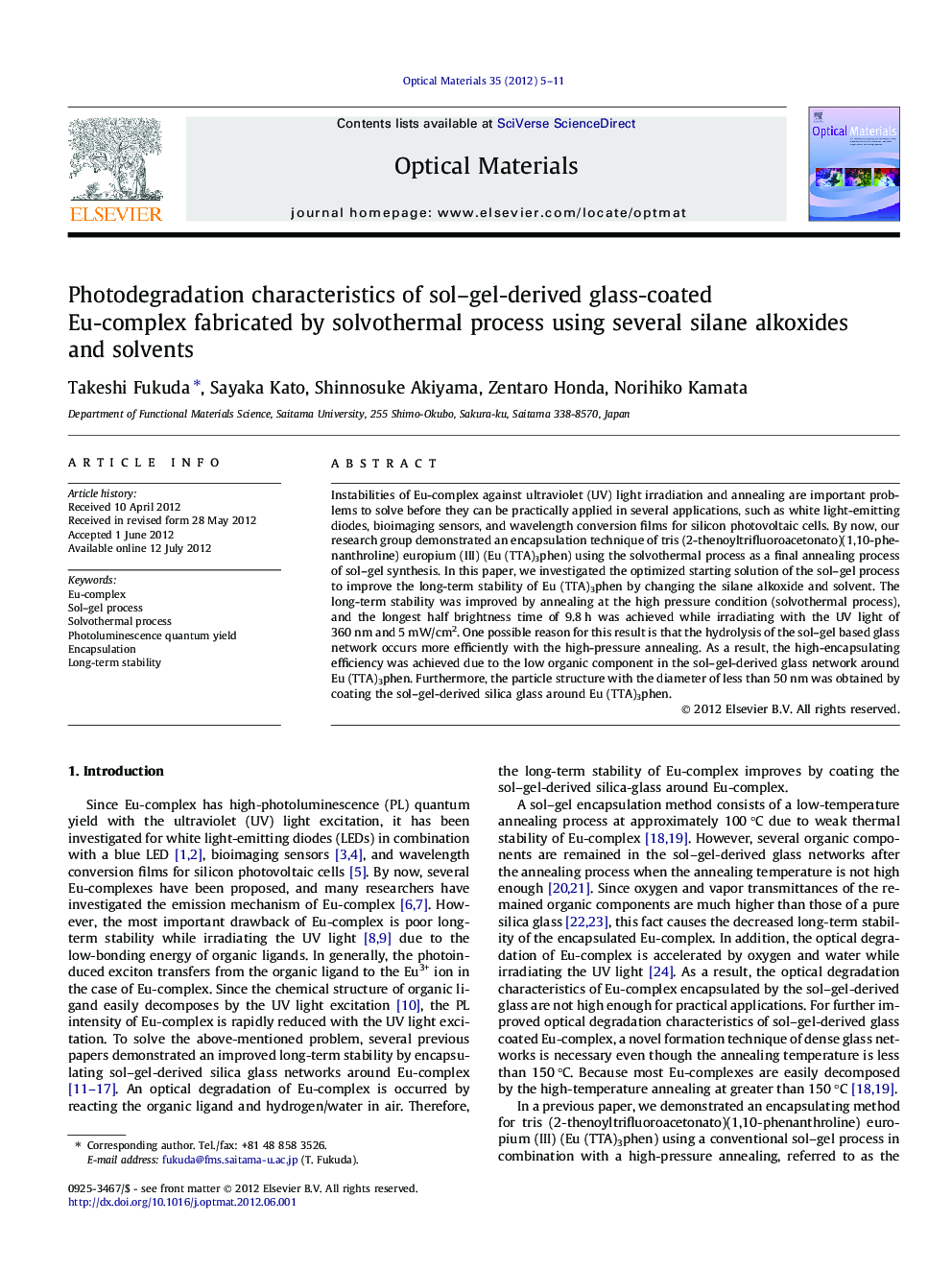| Article ID | Journal | Published Year | Pages | File Type |
|---|---|---|---|---|
| 1495259 | Optical Materials | 2012 | 7 Pages |
Instabilities of Eu-complex against ultraviolet (UV) light irradiation and annealing are important problems to solve before they can be practically applied in several applications, such as white light-emitting diodes, bioimaging sensors, and wavelength conversion films for silicon photovoltaic cells. By now, our research group demonstrated an encapsulation technique of tris (2-thenoyltrifluoroacetonato)(1,10-phenanthroline) europium (III) (Eu (TTA)3phen) using the solvothermal process as a final annealing process of sol–gel synthesis. In this paper, we investigated the optimized starting solution of the sol–gel process to improve the long-term stability of Eu (TTA)3phen by changing the silane alkoxide and solvent. The long-term stability was improved by annealing at the high pressure condition (solvothermal process), and the longest half brightness time of 9.8 h was achieved while irradiating with the UV light of 360 nm and 5 mW/cm2. One possible reason for this result is that the hydrolysis of the sol–gel based glass network occurs more efficiently with the high-pressure annealing. As a result, the high-encapsulating efficiency was achieved due to the low organic component in the sol–gel-derived glass network around Eu (TTA)3phen. Furthermore, the particle structure with the diameter of less than 50 nm was obtained by coating the sol–gel-derived silica glass around Eu (TTA)3phen.
► An improved optical degradation characteristic was realized for Eu-complex. ► A combination of tetraethoxy silane and hexane is suitable for the encapsulation. ► The photoluminescence quantum yield was also improved by the encapsulation.
